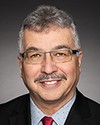Thank you, Mr. Chair.
Thank you to all the presenters here today. They were very interesting presentations. Of course I'm very interested in NATA's presentation.
I want to tell you a little story about when I was travelling in the riding.
I went into the small, isolated community of Déline. The plane I was on had 18 seats, I think, and it was only half full as we went into the community. Then we landed, and I had my meetings in the community. The next day, I was scheduled to leave, and the airport was full. Before my plane arrived, people were asking, “Do you want to give up your seat? I need to get out. I need to travel.” When we got on the plane, though, there were only nine of us because the weight restrictions and runway length required the plane to fly at only half-load. The cost to the plane didn't change; we just had to pay a little more. That's the same with freight. The planes are coming in with half loads, and the cost of the freight is incorporated into the the overall cost for the plane. That really adds to the cost of living in these communities.
As we move forward in trying to improve the nutrition north program, one of the biggest factors that we should look at is changing the runway lengths. We're not going to be able to do that through the territorial government's funding because they have already said that they're tapped out.
You talked about an airport capital assistance program. The Emerson report has recommended that also. Could you explain to the committee how the creation of a northern airport capital assistance program could improve productivity and quality of life in the north, and more specifically in the Northwest Territories?

